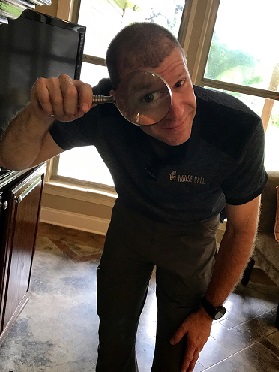As home inspectors, we don’t often come across three-phase power systems while inspecting residential structures. However, as we move into the commercial inspection side of the business (and on rare occasions in a residential home), we will come across three-phase electrical power systems. Having a basic understanding of how these systems work can go a long way towards making our job easier.
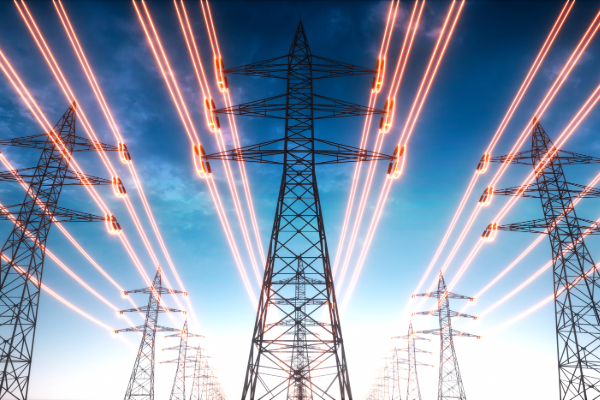
Single-Phase Power
Single-phase power is what we typically find in residential homes and small businesses. It’s called single-phase because of is characterized by a single sine wave of power making one complete cycle from zero to a positive peak, through zero to a negative peak, and back to zero.
The diagram below shows the sine waveform representing a single-phase power supply. In alternating current, which is used to supply power to almost every building in the known world, the current alternates between minimum and maximum peak points (at 90 and 270 degrees), with the voltage sometimes going to zero (at 0 and 180 degrees). This voltage “fluctuation”, while occurring almost instantly, means that single phase power is much less consistent than three phase power, which delivers a more balanced load. This fluctuation makes single-phase power most viable in appliances operating at less than 1000W, which means that it’s best suited for use in residential and small commercial applications.
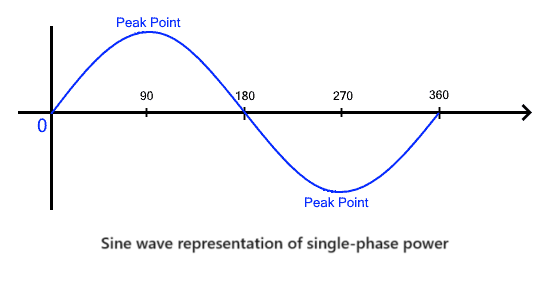
The voltage in a single-phase system typically ranges from 120 to 240 volts, which provides enough electricity for lighting and operating small appliances. The main advantages of a single-phase system are simplicity and cost-effectiveness. The installation of this type of system is straightforward, requiring less wiring and simpler equipment, making it more cost-effective for use in a residential setting. However, single-phase power does have its limitations. The major one being that it is less efficient for running large electric motors or equipment that requires a constant and reliable power source. Due to the single wave cycle, power delivery is not as smooth and can lead to more wear and tear on equipment.
Three-Phase Power
Three-phase power is a type of polyphase system and is commonly used in industrial and commercial settings. It consists of three electrical waves (or phases), equally separated in time, allowing power to be delivered more smoothly and continuously. In a three-phase power system, there are typically three power wires and one neutral wire. Each power wire carries a phase, making it three phases in total, and these phases are typically 120 degrees out of phase with one another.
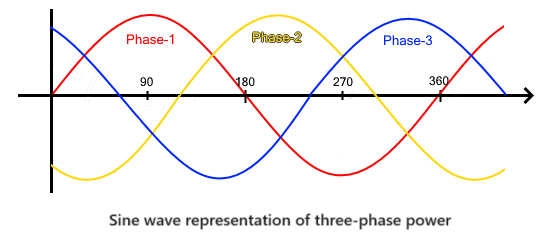
The diagram above shows the sine waveform for a three-phase power supply. Even though each sine wave is alternating between minimum and maximum peak points, the fact that there are three individual waveforms means that at no point during the cycle does the overall voltage drop to zero. This accounts for the more consistent power supply available with three-phase power, and makes it ideal for powering heavy loads (above 1000 watts). It even allows equipment to continue operating if there is a power outage in one of the three power-supplying wires, as the other two wires continue delivering power to the supplied appliance.
Three-phase power systems are characterized by their ability to carry more power as compared to a single-phase power system of the same voltage. This is possible due to the three different currents that can share the load between them. This results in a more stable power output and allows for smaller and less expensive wiring while improving the performance and longevity of electrical equipment.
Motors that run on three-phase power tend to operate more efficiently than those on single-phase power. They run more smoothly with less vibration, which results in less wear and tear on the equipment. These larger motors are able to start without utilizing starting capacitors or additional windings, which results in less heat being generated in the equipment. All of these benefits result in cheaper and more reliable equipment.
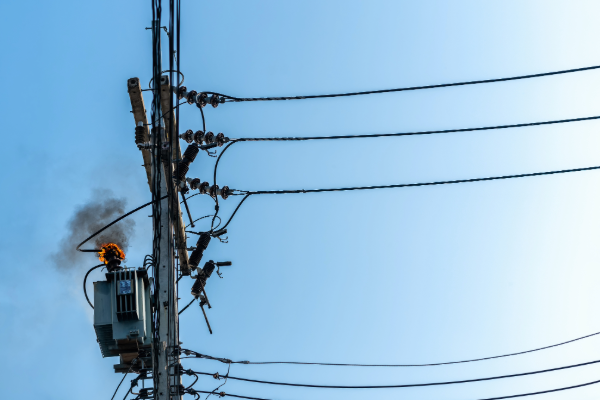
Moreover, a three-phase system can provide different voltage levels by using transformers. This allows equipment to be powered at the voltage for which it was designed to operate most efficiently. One of the major advantages of three-phase power is that its smaller and lighter wiring also reduces electrical losses in the distribution system.
While three-phase systems are highly efficient, they do have downsides, such as being more complex to install and therefore more expensive upfront. The complexity of the installation requires professional and often specialized knowledge, and three-phase power is not typically available in residential settings, although we may sometimes come across it in certain neighborhoods (where three-phase HVAC systems were installed in residential homes).
When inspecting a three-phase power system, most of the same things we do when inspecting a single-phase system apply. All of the same code requirements apply to a three-phase system, with the only real difference being the third hot wire coming into the panel. Most of the breakers will be the same as single-phase, with three-phase only coming into play for the breakers serving the three-phase equipment (which is typically limited to the large HVAC units common in commercial settings.
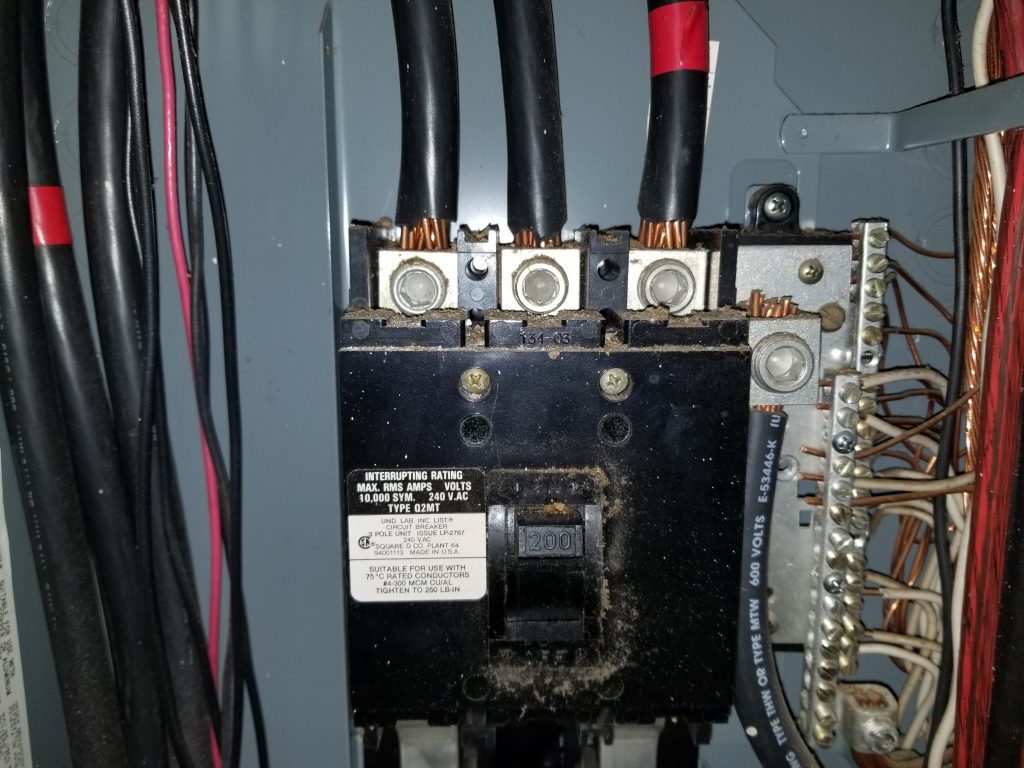
In summary, the critical difference between single-phase and three-phase power lies in the number of power wires each one uses and how the power is delivered through these wires. Single-phase power uses one power wire and is ideal for light loads. In contrast, three-phase power uses three power wires and is suited for heavy loads with more stable power requirements. Each system has its own range of benefits and drawbacks, and being aware of the differences between these systems will allow us to provide a better inspection for our residential and commercial inspection clients.
Would you like to get an email every Friday where we share the newest things we’ve discovered about home inspections? CLICK HERE to sign up.
Want to be an Influencer in Your Field? Share This Post!
Thanks, Joe
